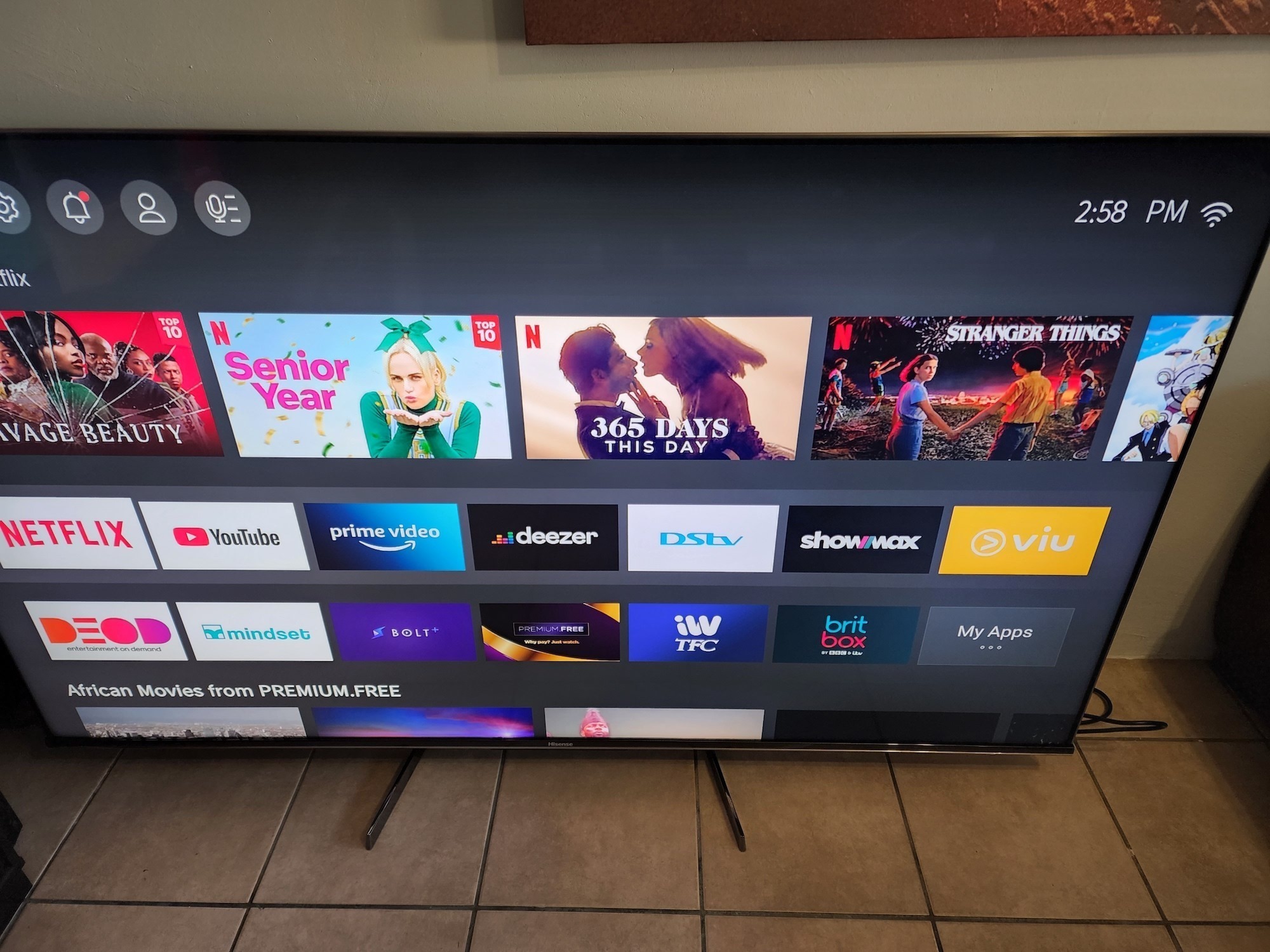If you're playing games and planning to sit at least five meters from your TV, the Hisense U9G is worth looking into. An Xbox Series X or PlayStation 5 is a great addition to this one. But if you're planning on spending all of your time switching between apps, maybe consider something with a slicker OS. Samsung and LG still sit on the top of that particular pile.
-
Design
-
Display
-
Performance
-
Price
-
Features
Is R40,000 too much to pay for a 75in TV? The Hisense U9G doesn’t think so. But then, if all you’re after is a super-large screen, you can get that for less. Samsung’s got a few models, one as cheap as R25,000. Heck, if you’ll willing to lose five inches, you can grab a 70in TV for R16,000. Nobody even knows how long five inches is anyway, right?
But with this sort of price gap in the market, the Hisense U9G has a lot to prove. Why is it worth dropping an extra R15,000 on Hisense’s panel over Samsung’s screens? That’s a slightly trickier question to answer. A TV is a TV, generally speaking. It’s the software that makes or breaks, with the panel having some say in the final outcome.
Share the load

Actually, not if you’re setting one up. It’s technically possible to take this TV out of its box and set it up alone, but only just. And even then, expect to perform your television assembly while stacking the screen on as many blankets as you can muster. And, if you get that far, you’ll have to find a way to get it into position without snapping it in half or something equally stupid. For once, when the box says it’s a two-person job, it’s actually a two-person job. But just the lifting. Actual assembly involves four screws and putting the batteries in the remote. That, you can do on your own.
Livin’ la VIDAA loca
Hisense’s software itself is up against some serious competition. LG’s webOS is still the gold standard, no matter what Samsung wants you to think. Tizen OS is a very close second. VIDAA U5 is an Android-based operating system with few of the advantages of properly Android TVs. Navigation is simple, as is the overall layout. Everyone from Disney+ to Netflix uses the tiled interface but Hisense’s implementation here feels a little simplistic. We suspect it’s because the VIDAA operating system is an Android version or two behind the likes of Skyworth’s more vanilla take on the OS.
Still, you’re spoiled for choice when it comes to apps. Everything is supported and installed from the outset. The major local options are all represented on the remote control with a dedicated button, in case you don’t feel like arrowing through the various menus. You might find yourself spending time with these keys. Navigation… has been done more smoothly elsewhere.
Are we clear?
So the operating system isn’t the best there’s ever been. That’s only part of the reason you’re considering this TV. In terms of hardware, you can expect a far better experience. If you’re a gamer, you’re bound to be pleased. There are four HDMI 2.1 inputs, three along the side and a fourth that also supports ARC facing outward. The TV itself supports HDR 10 and operates at 120Hz. If you’re looking for a monster screen for your shiny new PS5, you’ve found it. We still reckon 75 inches is way too large for gaming, but you do you. This is one area where Hisense’s TV wallops the cheaper Samsung Q60B. That set runs at a paltry 50Hz. Boo.
There are a few other features that might catch your eye. The U9G is IMAX Enhanced — in other words, compatible content will show a little more than you’d see on a non-certified TV. DTS X is there, and a range of Dolby certifications are built-in too — expect Dolby Vision and Dolby Atmos.
The panel itself is proper 4K — 3,840 x 2,160, which looks bright and crispy at the right distance. Like all monster panels, the picture breaks down a little as you get closer. Which is fair enough. Spreading the same number of pixels over a greater surface area always has the same effect. The Hisense U9G uses what it calls a combination of micro-LED and quantum dot tech for its panels. The result is a bright enough screen — 500 nits of brightness will get the job done in most cases.
The problem with micro-LED, though, is that there’s some bloom. Micro-dimming zones help, but they don’t eliminate the bright spots encroaching on darker sections. At least there’s no remote control-enabled pointer to contend with. LG’s micro-LED TVs are famous for having enough bloom to qualify them for a cherry blossom festival. It’s no dealbreaker, but it’s not OLED. Just keep that in mind.